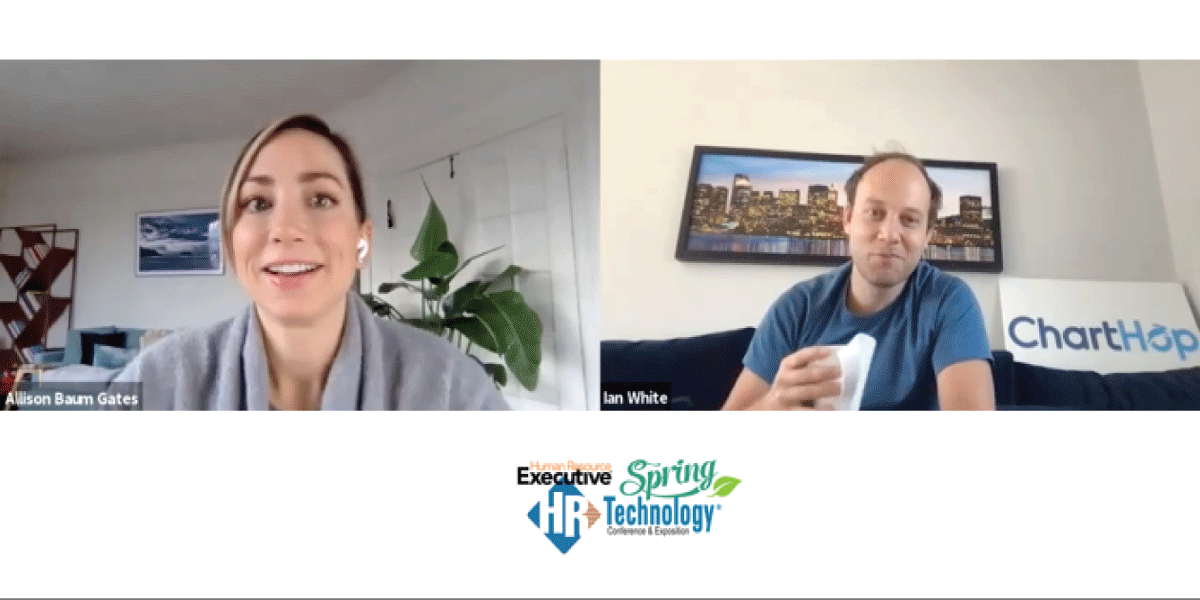We didn’t just live through unprecedented times — we worked through them, too.
This past year propelled everybody into the “future of work”, as businesses were forced to swiftly rethink workforce operations and finally address previously ignored initiatives, like work-life balance, DEI, and the employee experience.
The question is, where do we go from here? Pandemic aside, the workforce has fundamentally changed. Now, HR leaders are proactively thinking about how they can ensure the long-term success of their businesses and people, and what tools can help.
Recently, our Founder and CEO Ian White sat down with Allison Baum Gates, Partner at SemperVirens Venture Capital, to discuss the future of work and what it means for companies. Not just whether or not they’ll return to the physical office, but how core operations will evolve, how companies will continue making progress, and what role data and technology play in keeping them accountable.
Below, Ian’s ideas about the future of work:
Allison: What does the future of work mean to you? What do you think it will look like in the near future?
Ian: I’m broadcasting here from my home office when, a year ago, we were all very invested in being in-person. We felt like that was a really important aspect of work communication, and finding the right office was a key decision for every business leader. But this last year accelerated our understanding that we can work from different places, that a remote and distributed future is possible. And at the same time, there is still value in getting people together in person. People are still going to want to do that. So, the future of work looks more flexible and it looks more hybrid than ever.
At ChartHop, we give employees a great amount of flexibility in remote accommodations. We recently sent out an employee survey and people talked about the unbelievable freedom they have had to work from anywhere. That’s an incredible new thing that I think was always possible, but the past year demonstrated how it could actually work.
With the move to more flexible, more rapidly responding organizations comes the need for a better system of record and a better data strategy. If you’re working across the globe in a flexible, remote model, you need to be able to understand, centralize, and unlock the digital map of your organization. That’s what we’ve seen both for ourselves and for all the different companies we work with — this need for a data-driven strategy that starts with the map of the organization.
Allison: We’re at a crossroads as things slowly return to normal. HR leaders are needing to decide whether their organizations will revert to the way things were before coronavirus, or if they’re going to continue remotely.
What tools do you think HR leaders need to make this decision?
Ian: Before making any major decision that affects the organization, you first need to understand your data.
For example, if you have a 10,000 person organization, where is everybody working from right now? How many of your people chose to relocate or move somewhere new? How many of your people are in positions where it’s important for them to have some in-person collaboration? What about junior employees? What about new hires who are onboarding remotely? Organizations need to understand their data inside and out to inform their decisions.
Allison: What decision do you think they’ll choose?
Ian: It feels like many organizations are headed towards a hybrid model. There are still offices and places to go to work together, but those offices might not be in-person five days a week, or won’t be designed for permanent in-person employees. We’re going to need to rethink so much of what we thought we knew before.
For us, our choice has been to really embrace remote work. It was easier for us to come to that decision because the company started relatively recently and we’ve multiplied our headcount four times since COVID-19 started. Most of our team has never met in-person.
But it’s still possible to establish strong workplace connections to your coworkers over a remote environment. It just requires more attention and mindfulness, as well as a data-driven, actionable strategy for onboarding new employees.
For many of our customers, having a resource to map the organization to reporting structures, teams, departments, and other data has been an incredible onboarding and informational resource for their employees. As companies look towards the future, they need to have more investment in knowledge bases where people can retrieve data information in a self-serve kind of way.
Allison: Diversity, equity, and inclusion in the workplace has also taken center stage this year. And it can be scary for organizations who might be in the process of discovering inequity they didn’t realize was there.
What role should data and transparency play in communicating DEI initiatives?
Ian: Whether it’s DEI or any organizational initiative, it’s important to lead with the facts. More information is better for people than less. When you hide information from people, they’ll fill in the gaps with their worst imaginings of what you’re hiding.
Acknowledging that an organization may have work to do is a good first step. But then lead with collecting the data. Then, look at that data objectively, understand where there are areas for improvement and, to the degree that it’s possible to do so, share that information back to the organization to build trust.
There’s a fear around salary transparency because compensation is often a very personal topic and it’s a little bit taboo in American society to talk too much about money. But I think it’s really important. Even if you’re not going to share your entire compensation with everybody in the company, you want to proceed from the framework that if you did, there would be no surprises. That’s the best way to ensure fairness.
At scale, that can be difficult to accomplish unless you have fair, transparent practices around compensation, as well as a single place where you have a full picture of your compensation and demographic data. Anything you want to manage or improve is best measured first. The beginning of an inclusive, fair, equitable compensation strategy starts by understanding the data.
Allison: The remote work movement has introduced many variables in terms of how people are paid depending on location. What’s your perspective on merit vs. location-based salaries?
Ian: Different organizations have different ways of approaching these challenges.
At ChartHop, we are not adjusting pay based on where people have chosen to move. For me, it came down to a question of fairness. If two employees are working from two different locations, doing the same work and providing the same value to the company, there isn’t a strong basis to pay them differently. That’s a choice that we’ve chosen to make.
I think, historically, if you are asking people to live in a high cost of living area so that they can come into an office, then it makes a lot of sense to adjust that to the cost of living. If the expectation is to live in New York to work in a New York office, that pay should be calibrated to New York’s cost of living. But In a fully remote environment, it’s up to the employee where they want to live, causing a lot of other companies to calibrate their salaries based on other factors that make sense for them.
The key is: if you do have a location-based compensation strategy, that strategy needs to be clear and transparent so that everyone understands precisely how those adjustments are being calibrated.
Allison: Any other parting words for what the next six months might look like as we navigate the end of the pandemic?
Ian: I think that every organization now recognizes how important it is to have a great people strategy.
And the work HR and people leaders are doing to get more strategic is going to change the way we work for the better. It’s going to create more collaborative, more inclusive companies that provide more clarity, more career laddering, and more transparency to ultimately create more flexibility for people. And our role at ChartHop is to help empower you and all the work that you’re doing.
Tune into the full conversation from HR Executive’s 2021 Spring Technology Conference & Exposition.





